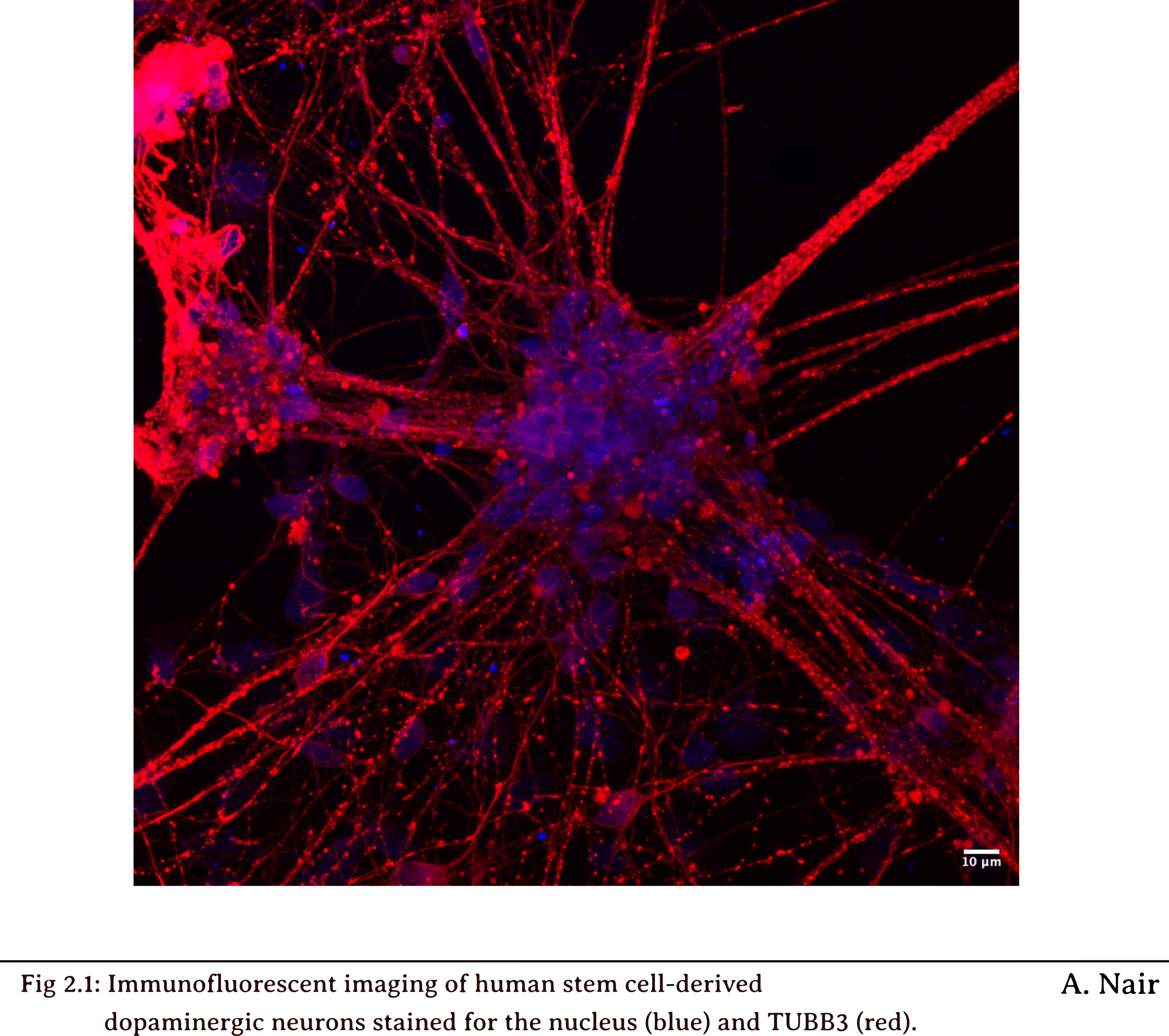Figure 2.1: Nair et al.



Abstract
Parkinson's is an umbrella term used to describe the death of dopamine producing neurons leading to a range of motor and non-motor symptoms. Astrocytes are the support cells of the brain and are always attached to the communication cells, neurons. It has been found that during inflammation astrocytes gain the ability to kill dopamine producing neurons, furthering the Parkinson's progression. In our lab we culture midbrain astrocytes and neurons from human stem cells to study their relationship in Parkinson's progression.
To understand how the galaxy is rotating, we assume that the rotation follows a specific equation—or model—with a given number of unknown parameters. Using statistics, we can determine which values of these parameters produce a model that best fits the data. For a simple example, this is like fitting a line to a set of points and determining the slope and y-intercept of the line. This figure shows which values provide the best fit for this galaxy when assuming a rotating disk model. Each distribution indicates the region where we expect the parameter to be; the more points in a region, the more likely it contains the correct value for this galaxy. In other words, the peaks indicate the values with the highest likelihood, which are then written above for each parameter.
